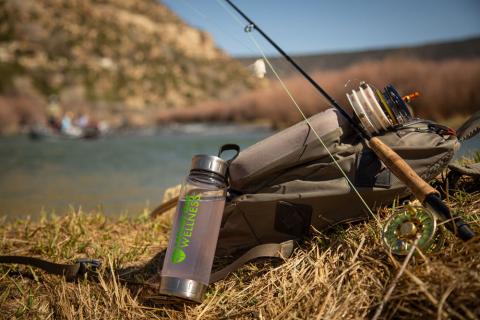provided by John E. Phillips
Mossy Oak Fishing Team Leader Kevin VanDam of Kalamazoo, Michigan, won the Major League Fishing (MLF) Championship at Tennessee’s Chickamauga Lake on June 9, 2021. The $100,000 VanDam won increased his career winnings to $6.9 million. We wanted to know not only how VanDam won this MLF Championship, but also what we could learn from how and where he fished that type of lake, as well as the lures and the patterns that will help all of us catch more bass this summer. To learn more about Kevin VanDam, visit his website or go to his Facebook page.
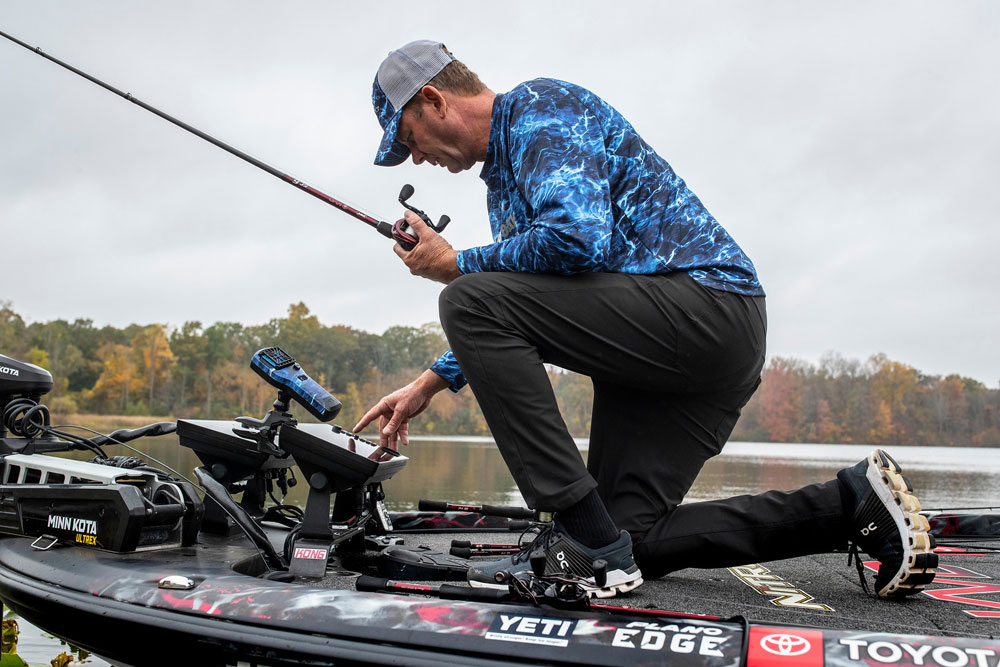
Kevin VanDam’s Bass Fishing History on Tennessee’s Chickamauga Lake
John E. Phillips: Kevin, what did you know about Tennessee’s Chickamauga Lake before you arrived to fish there in June?
Kevin VanDam: It’s been said too many times already, but time on the water and time on many different kinds of water is the best way to win a bass tournament or to have a successful fishing trip. I fished Chickamauga in bass tournaments several years ago and one in the 1990s. Also, MLF fished a Bass Pro Tour Event in the early spring of 2019 there. In 2014, at this same time of the year, I fished a bass tournament on Chickamauga. Having that much history on the lake helped me quite a bit in this tournament. I’ve learned that the more history you can build up on the lakes you fish at various times of the year, the better your odds are for catching bass anytime you go to that lake.
Phillips: How much did having that history of bass fishing on the lake help you win this time?
VanDam: Chickamauga has changed a lot over the years. But at least I knew what the lake looked like in its three sections – the lower end, the middle and the upper end of the lake. I knew I wouldn’t get lost on this lake because I had quality maps and waypoints I’d marked. But other than just the lay of the land I didn’t know that much about the lake or how it would fish during the tournament.
Phillips: How did your practice day go at Chickamauga?
VanDam: I did a lot of graphing with my Humminbird Helix 12 depth finder. I primarily was looking for offshore structure. From past history, I knew that on the Tennessee River during the early summer months, the bass would be out on the ledges - where the bass moved after the spawn. I fished some of the schools I found, but to be honest, I didn’t have a very good practice day. I did locate a couple of spots where I received multiple bites. So, at least I had some places to start fishing once the tournament started.
I think that one mistake many bass anglers make is they go fishing before they learn where the bass are holding. I’ve learned that if I can pinpoint where the bass are concentrating – what water depth they’re holding in, what kind of structure they’re concentrating on, and where they move to when the current’s not running or is running or is in the lake – helps me be more successful. But honestly, after that first day’s practice, I didn’t think I’d identified any location where I could win this tournament.
A couple of things happen during practice. You don’t want to catch any bass you may need to weigh-in for the tournament, and you don’t want to be seen fishing any places by the other competitors. Something else I’ve learned is if I’ve found a good place to fish, all the other competitors also probably have located those same spots. So, I try to find other locations where other tournament fishermen won’t be looking for bass.
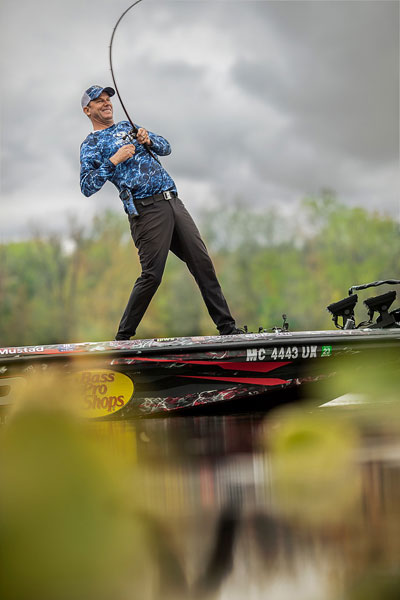
The First Day of Competition
Phillips: Kevin, what was your game plan going into the first day of competition?
VanDam: I thought I’d fish those two spots I’d located on practice day. When I left the launch site, I went straight to my number-one spot. I had an early start time – I was the 12th boat to leave the launch site. I pulled up and started fishing. I had two other competitors come to that same place, but once they saw I was there, they left. I had that area all to myself. I didn’t catch any bass right off, but after some while, I started catching some bass - four or five bass in the first period. Then I moved around some during the second period. I slowly began to build my catch record.
I realized that the power plant probably would start generating water later in the day. I was really banking on that third period to catch the most bass. I know that on the Tennessee River when the weather gets hot, and people turn on their air conditioners that the power plants must move some current. I located a group of bass ganged up on a ledge that had some nice bass in it. I was catching bass weighing up to 5-1/2 pounds there. That’s when I knew there was a good number of bass holding on the spots I was fishing, and I learned from the score tracker that I should have enough weight to make the next day’s elimination round and possibly win the Knockout Round on Day 3.
I was in second place after the first day. So, I felt like I’d bought myself some time to look at several areas I’d graphed and possibly pinpoint another school of bass. That first day of competition allowed me to determine what baits were the most efficient to catch bass with on that day and at that time. I’d found that different Strike King crankbaits solicited the most bass strikes for me. I narrowed the size of crankbaits down to a Series 5 XD and a Series 6 XD.
Phillips: What colors of crankbaits seemed to be the most productive?
VanDam: I was fishing natural-shad patterns, like the green-gizzard shad and the blue-gizzard shad colors.
Phillips: How did you feel when you went to the weigh-in station and learned you were in second place at the end of Day 1?
VanDam: My confidence level really went up when compared to what I’d done on my practice day. After practice, I really didn’t think I’d found the bass I would need to do well in the tournament, but it was okay.
Day 2 of Competition
Phillips: What was your game plan for Day 2?
VanDam: I felt I could go out the second day, catch some more bass and still have time to check some new places I’d pinpointed on my depth finder. Hopefully I’d find one or two more schools of big bass. But to be honest, I truly didn’t have a good Day 2. I think I only caught four or five bass all day. So, I dropped back to fifth place. However, I was still eligible to compete on the third day for the Knockout Round where all the previous weights would be zeroed.
On Day 2, the area had numbers of clouds and rain with no current running through the lake in the morning. I already knew that on overcast, cloudy, rainy days and no current, bass tended to roam around, looking for bait, rather than remaining schooled-up on structure where they knew the baits would come to them.
Once current is moving through the lake, there will be specific locations on ledges where bass will hold. Most of the time, if you catch one bass when current’s moving, you’ll have a good chance of catching several more there. Also when the current’s running, the bass generally will relate more to the bottom where they’re easier to find.
But even after catching only four bass on that second day, I still only dropped three places from second place to fifth place. That let me know that none of the other competitors had very good days of fishing either. However, I finished the two days of fishing having caught 70 pounds of bass. I also knew the next day of competition - the Knockout Round – would have the top-38 anglers in the tournament vying for a chance to fish the final day, the Championship Day, and win the entire tournament.
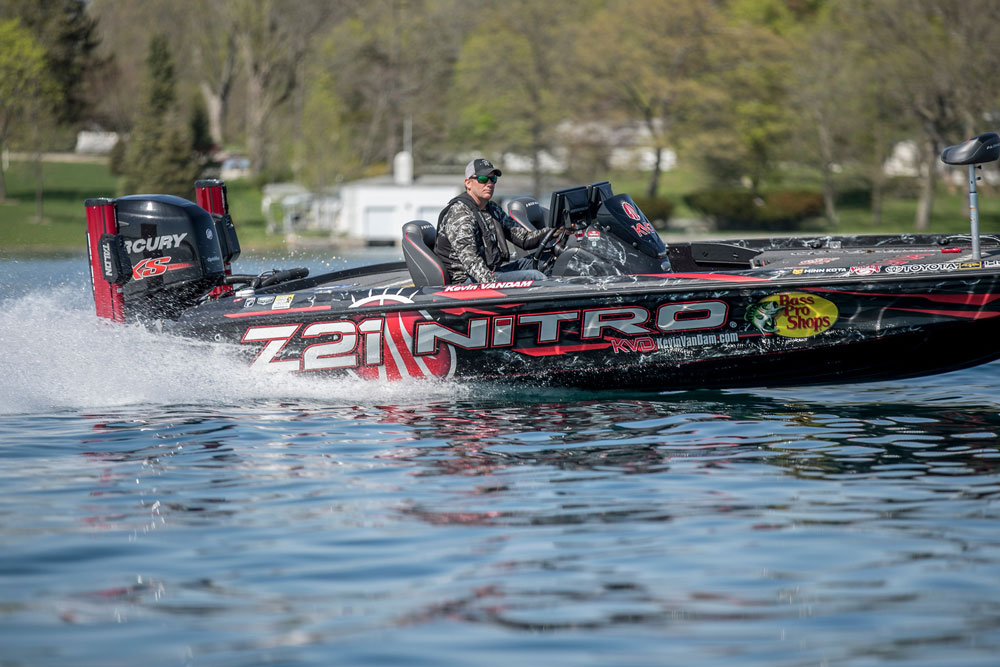
The Knockout Round at Chickamauga Lake
Phillips: Kevin, who were you most concerned about who might have a better day of winning than you did?
VanDam: I don’t like to be concerned about anyone else and how he’s fishing. I just want to be concerned with how I’m fishing. But this tournament had numbers of local anglers who had a ton of knowledge on Chickamauga – Andy Morgan, Wesley Strader, Mike Neal and Jacob Wheeler all fished this lake often. They had knowledge on where, when and why bass would set up where they did. All those guys were doing really well in the tournament.
Phillips: Could you tell where those competitors were fishing on the second day?
VanDam: Not really, but I had some ideas. I knew most of the top anglers were fishing ledges for bass like I was. I felt pretty sure they were fishing about the same way as me.
Phillips: You said the bait you used the most and caught the most bass on were deep-diving crankbaits. Were you using any other type of lures?
VanDam: Yes, I was. I was fishing some of everything in my tackle box. I caught a few bass on a big, Strike King Rage Tail Worm, some on a Strike King jerkbait and others on a jig. But 95% of the bass I caught in this Chickamauga tournament were caught on Strike King crankbaits.
Phillips: Why do you think that the crankbait is one of the most productive lures when fishing ledges for bass?
VanDam: The crankbait is super-efficient when you’re trying to cover lots of water and to trigger strikes from bass. To trigger the bass to bite often is determined by how fast or slowly you retrieve the crankbait and the angle at which you’re casting the crankbait to the structure. Often stopping and starting a crankbait will trigger strikes on ledges. I try to burn a crankbait over shell bars and often stop and start it to determine which type of retrieve produces the most bites. I’ve learned that many times if you can get one bass to bite, then the school that bass is in will get fired up to bite. You may catch three to four more bass out of that same school, before the bass quit biting. My most effective retrieve at Chickamauga was to run the crankbait fast and hard and have it kick off the shells on the bottom.
If there’s current in an area, the bass either will be facing into the current or across the current. Sometimes I’ll catch 8-10 bass out of the same school, but half of those bass may be undersized. MLF imposes a 2-pound limit, and I caught numbers of 1 to 1-1/2 pound bass at Chickamauga.
Phillips: What position were you in going into the Knockout Round of the tournament?
VanDam: I was the top seed. Then for the Championship Round, the field included me in third place, two other guys had won their elimination rounds and seven other contestants made up the field of 10.
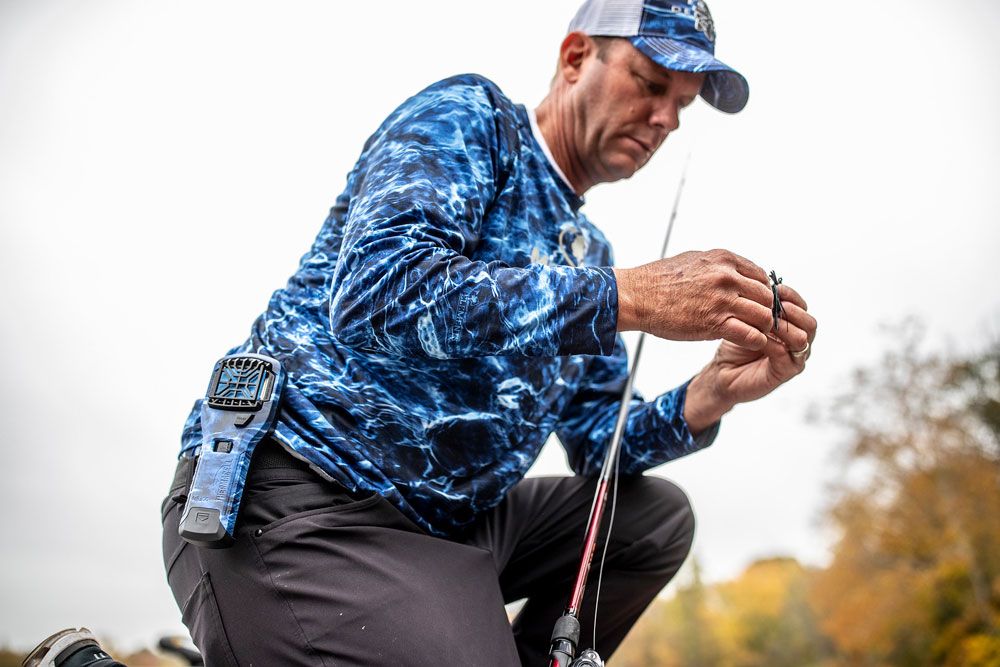
Chickamauga Lake’s MLF Championship Round and the Win
Phillips: What seed were you going into the Championship Round at Chickamauga Lake, and who was ahead of you?
VanDam: Shin Fukae and Jason Lambert were ahead of me going into the Championship Round, and I was the third seed. I knew both of the guys ahead of me had very good tournaments and found some very good bass. All the anglers in this top 10 were top-notch bass anglers. Most of them had had much more experience on Chickamauga than I’d had. When we left the boat ramp for the Championship Round, the weather was cloudy, and rain was coming down. We had no current. So, the first thing in the morning, I went back and fished all the places I’d fished before that had held bass, when no current was moving through the lake. However, I thought the bass probably would be scattered.
Michael Neal jumped out to a 20-pound lead that morning of the Championship Round. Although that was a heavy lead, I felt that if I could pinpoint a school of bass backed up on one of the ledges I was fishing, I might could catch multiple bass off that one spot. I hit one place and caught four nice keepers off it. Next I fished another spot and caught several more good bass there. I then took over the lead in the first period. During the second period, four of us who were trading the lead back and forth. We all were within 2-3 pounds of each other. I think the four of us were right at or somewhat over 30 pounds of bass for the first two periods of the Championship Day.
During the third period, I moved to a new place and caught a couple of very good bass. I found the best angle and the right spot to cast to, and I started blistering the bass – catching a fish on almost every cast. In that third period, I jumped up to a 30-pound lead. I caught and released more than 70 pounds of bass in only about 20 minutes.
Phillips: If you look back on that Chickamauga competition, what one aspect of it allowed you to jump out into the lead?
VanDam: I think I found a spot that wasn’t a community hole and that the other contestants may not have located. I determined how to cast to that place at the right time of day to make those bass bite.
Phillips: How do you pinpoint places to fish that no one else has discovered?
VanDam: Other people may find these kinds of spots, however, I’ve had a tremendous amount of experience fishing on underwater ledges and learning how bass set up on ledges under various weather, water and current conditions. Too, I think I’ve learned to quickly adapt to changes in all these factors based on past experience.
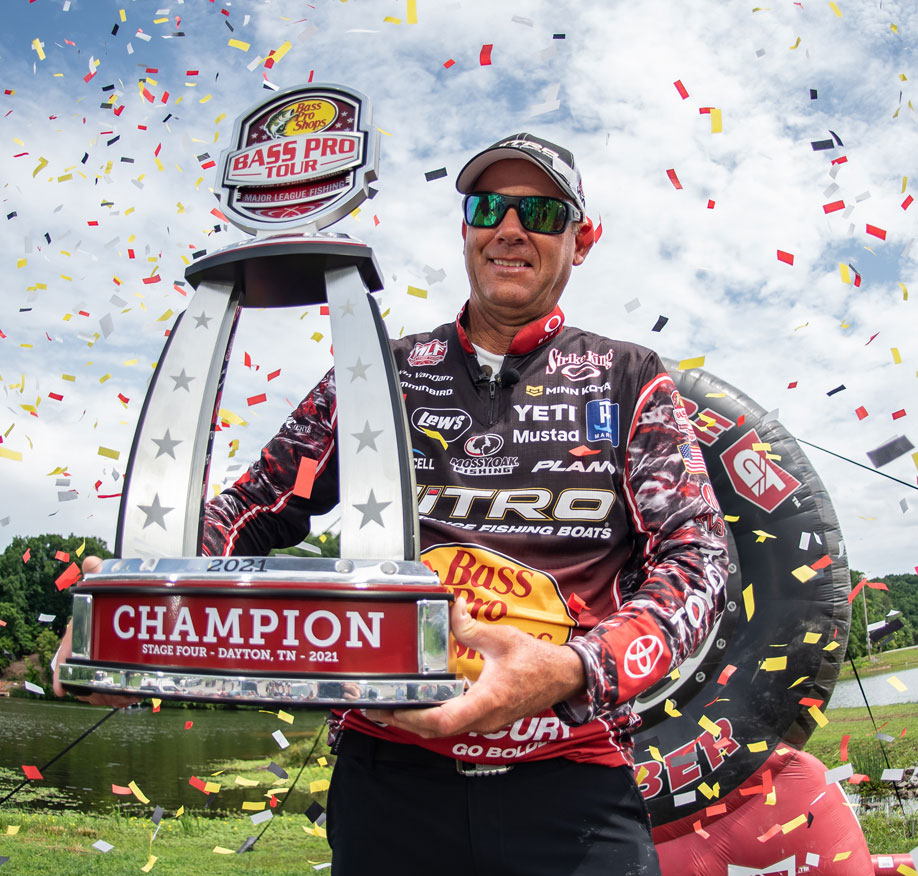
Phillips: When did you know you’d won the tournament?
VanDam: Not until the last minute of the tournament. I had jumped out into a really big lead, but once I’d caught all the bass I could catch out of that one school, I couldn’t get another bite. The other three top contestants who were swapping licks with me, started catching bass when I wasn’t. In that last 1-1/2 hours, they whittled my lead from 30 pounds down to about 10 pounds. But within 5-10 minutes of the tournament’s end, I was feeling good and felt I had a chance to win. Although I didn’t catch many big bass at this tournament, my biggest bass was a 6-1/2 pounder I caught on a Strike King Series 5 XD crankbait.














